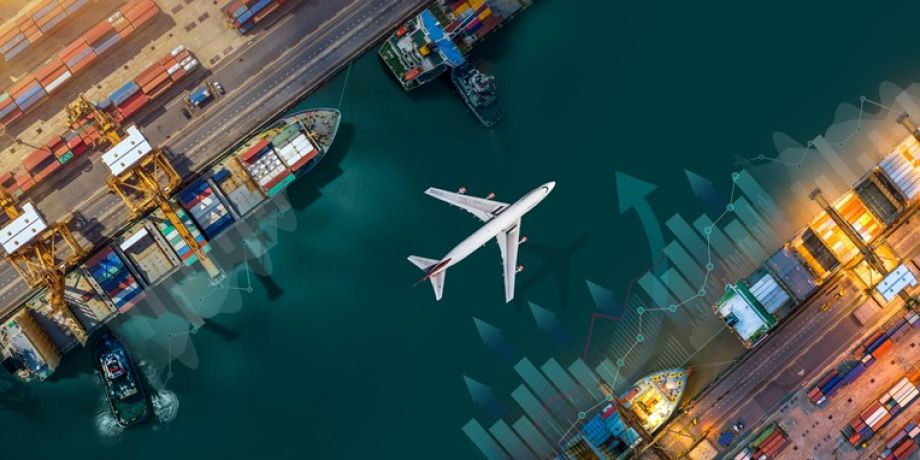
INTERNATIONAL LOGISTICS: A HIGH-INTENSITY TRADE
While the beginning of the summer was marked by a rapid rise in volumes and freight rates for Asian imports, this trend is now shifting somewhat to North American flows, and also extends to air activity, which is entering a peak. Let’s take a look at the current trade.
AIR TRAVEL IN HIGH SEASON
We are currently seeing a significant increase in activity, particularly on Asian imports, which contrasts with the capacity available in the winter season and is leading to an increase in freight rates. Several factors may explain this high season:
- The E. Commerce reserved a large part of the air space, especially at the end of the year with the launch of the new IPHONE.
- As shipping times are longer, with many risks on the passage through the Cape of Good Hope, customers are doing more air imports from Asia to guarantee stocks.
- European and Middle Eastern airlines are also used for inter-continental trade (ASIA/USA, ASIA/SOUTH AMERICA and vice versa).
- Congestion at some major airports from Asia
Importers therefore face difficulties in obtaining capacity from Asia.
STRONG MARITIME ACTIVITY CHANGES COURSE
The strong demand for Asian imports at the start of the summer, due in particular to importers anticipating the need to fill stocks for the Christmas holidays, seems to have eased off since mid-August, as do freight rates, which fell sharply between July and the end of September. Faced with falling demand, blank sailings are becoming more common on both transpacific and transatlantic routes, leading to a drop in capacity that will continue for several weeks, until after Golden Week, according to our current data.
It should be noted, however, that both volumes and rates remain high.
In contrast to Asia imports, there has been a general increase in freight rates on North American exports, in the form of overloads, for a number of reasons: increased demand, reduced capacity, probable uncertainty linked to the forthcoming US presidential elections and strikes, which are increasingly likely on the East Coast of the USA, with each day off having a major impact on the entire supply chain. We are already seeing shippers planning to use the West Coast in anticipation of these strikes.
On the Asia export trade, capacity has stabilised and has always exceeded demand since June. Freight rates have varied little since the start of the summer.
On the other hand, the reliability of services provided by shipping lines is quite low, at around 50%. It takes an average of 50 days at sea for a shipment from Le Havre or Fos to Ningbo, and the difficulties are exacerbated when there is transhipment in a congested hub such as Singapore. Overall, the organisation of shipments is made difficult by a number of factors (congested ports at several major ports in Asia, poor weather conditions, particularly when passing through the Cape of Good Hope, etc.) and the reliability of transit times is not improving. The prospect of a massive strike in the United States could exacerbate the situation (see our article: DISRUPTION ON THE HORIZON: STRIKE IN THE USA).
In keeping with the quality of our services, the Balguerie Group teams pay particular attention to the current situation and keep you informed of any market developments.









